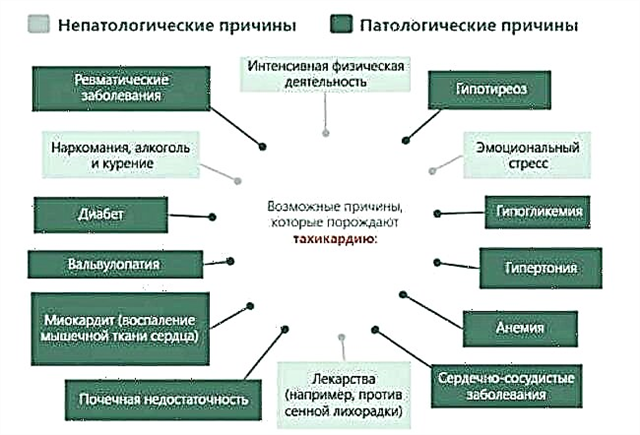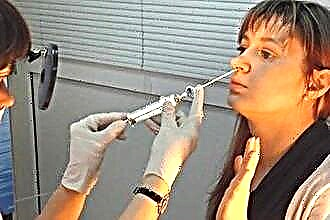Acute myocardial infarction (AMI) remains the leading cause of morbidity and mortality worldwide. It occurs when, due to occlusion or spasm of the coronary vessels, the decrease in blood supply to the heart muscle exceeds a critical threshold and the recovery mechanism designed to maintain homeostasis is suppressed. Ischemia at this level for a long period leads to irreversible damage to myocardial cells. The death rate from MI is about 30%, with more than half of the deaths occurring before the patient is admitted to the hospital.
What is large-focal MI and what is its peculiarity?
Large-focal MI is called myocardial infarction, in which a pathological Q wave appears on the ECG in parallel with changes in the ST segment or T wave, which indicates the presence of a significant area of necrosis in the myocardium.
Large-focal infarctions can occur on their own due to occlusion of large-diameter arteries or form from small-focal destruction. They are accompanied by severe pain and a large number of complications. In addition, this type of myocardial infarction is characterized by the appearance of congestive heart failure during hospitalization and an increased incidence of in-hospital mortality.
What is the difference between the management of large-focal MI?
Although the initial treatment for acute coronary syndrome may seem similar, it is very important to distinguish whether the patient has an ST elevation and an abnormal Q wave, which is indicative of acute coronary artery occlusion and possible development of a large focal infarction.
Prehospital care, if available, includes the following:
intravenous access;
- additional oxygen supply if SaO2 is less than 90%;
- immediate administration of nitroglycerin and aspirin;
- telemetry and prehospital electrocardiography (ECG), if available.
The goals of prehospital treatment include:
- adequate analgesia (usually obtained with morphine);
- pharmacological reduction of excessive sympathoadrenal and vagal stimulation;
- treatment of ventricular arrhythmias;
- maintaining cardiac output and systemic blood pressure.
Management of large-focal myocardial infarction during hospitalization is based on two key components: rapid recognition and timely reperfusion.
Reperfusion in this type of myocardial infarction is preferably performed using thrombolysis. The drug should be administered at the prehospital stage, if it is impossible - in the first 30 minutes after hospitalization. Alteplase, reteplase or tenectoplase are used. In addition, it is necessary not to forget about the contraindications and side effects of this therapy.
Anticoagulants
These drugs are an important adjunct to reperfusion therapy. They should be prescribed prior to revascularization. Use enoxyparin or heparin.
Antiplatelet agents
All patients with MI should receive an empiric loading dose of aspirin (325 mg) as early as possible and prior to reperfusion. The daily maintenance dose is 75 mg.
Other agents used for dual antiplatelet therapy are P2Y12 receptor inhibitors (eg, clopidogrel, ticagrelor, prasugrel). A loading dose (300 mg) of these drugs is given before or during reperfusion, followed by a maintenance dose (75 mg). The use of prasugrel is not recommended in patients with a history of stroke or transient ischemic attack.
Features of the prognosis and rehabilitation of the patient
The prognosis depends on the timeliness of treatment and the size of the necrotic focus. Large focal myocardial infarction often leads to patient disability and death, whereas with small foci of necrosis, deaths are extremely rare. Despite the differences in the short-term, the long-term prognosis for large-focal infarction is better than for small-focal infarction (27% versus 28% according to studies by American cardiologists). This paradox is explained by the higher recurrence rate of small focal heart attacks.
After initial treatment and stabilization of the patient in the early and critical phase of AMI, the goal of caring for these patients is to restore normal activity, prevent long-term complications, and change lifestyle. This goal is achieved through the implementation of important key elements, including the use of cardioprotective drugs, cardiac rehabilitation, and physical activity and diet.
Cardioprotective drugs
ACE inhibitors are recommended for all patients with left ventricular ejection fraction less than 40%, as well as patients with concomitant hypertension, diabetes mellitus or chronic kidney disease.
Beta blockers
After myocardial infarction, all patients should be supported on a beta blocker. These guidelines indicate the use of one of three drugs that have been shown to be effective in patients with heart failure: metoprolol, carvedilol, or bisoprolol.
Statins
All patients with acute myocardial infarction are eligible for highly effective lifelong statin therapy. Prescribe atorvastatin at a dose of 40 mg or rosuvastatin at a dose of 20 mg.
Lifestyle modifications include a low fat and salt diet, smoking cessation, modern vaccinations, and increased physical activity. The recommended frequency of regular exercise is three or more times a week, 30 minutes each.
Conclusions
After being hospitalized for a heart attack, patients often become depressed. They begin to worry about whether they will be able to resume full physical, social, professional and sexual activity. Large-focal infarction is indeed an extremely dangerous disease with many complications. However, this does not mean that such patients are shown strict bed rest until the end of their days. Prompt provision of qualified assistance, competent cardiac rehabilitation and a patient's conscientious attitude to treatment are three components of a successful recovery and prevention of life-threatening consequences. Be healthy!



